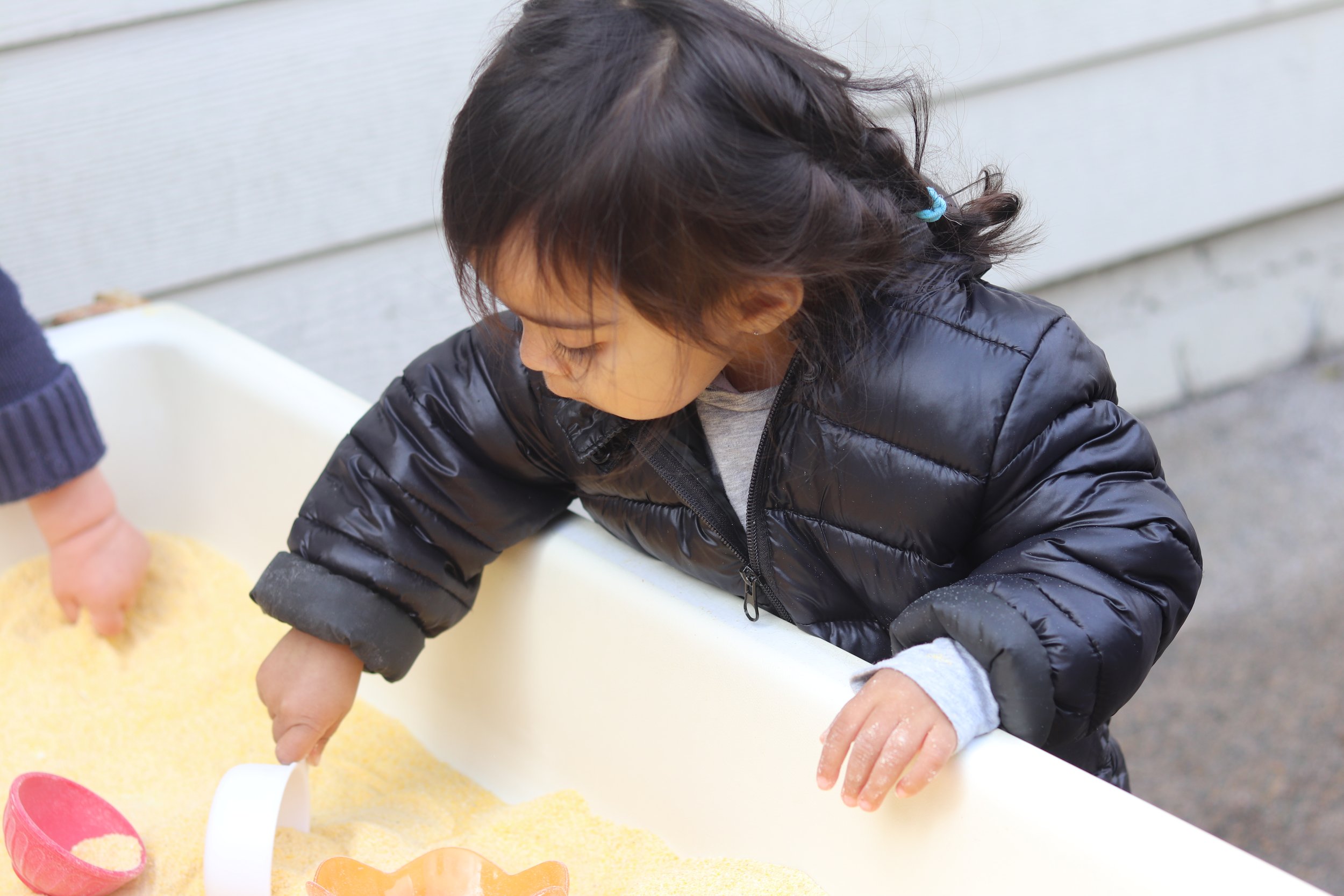
The Power of Play
Stampede in the Nursery School
by Liisa Hale, former Co-Director
With a shriek of joy, five bundled-up children take off at a full run around the climber and back to the fence. It is a chilly day and most of the children are playing inside, so there is plenty of room to run without disrupting other children. The teacher watches the group go whooping around the yard, full of joie de vivre on this crisp winter morning. As four children stand panting at the fence the last child runs up the group starts off again… but this time the teacher steps in front of the crowd.
“Just a minute,” she says, “are you running away from someone?”
The four nod “yes,” and add “from her,” pointing at the last child who has come panting up.
“Oh, I see,” says the teacher “I wonder if it is fun to have everyone run away from you? Some children don’t like it. They think it’s not so friendly.” Turning to the last child the teacher asks “Do you want the children to run away from you?” The child smiles gamely and nods as the teacher continues “But some people don’t like it.” The last child nods again, this time without attempting to smile.
The teacher observes, “But running is fun, and it’s fun to run all together!” Everyone agrees, with lots of head nodding and “yeahs!”
“Sometimes people run together,” comments the teacher.
“Yes,” says one of the boys, “like a stampede!”
“Don’t worry, we’ll be careful,” says one of the children as they take off for another lap in a herd.
Upon returning, the first child to the fence calls out “I won!”
“Don’t say that,” says another, “it’s not a race, it’s a stampede.”
“Oh,” the teacher clarifies, “a race is when someone wins, and a stampede is about everyone running together.”
“Don’t tell me that!” says the corrected child as they all take off for another run.
The teacher stands smiling and watches them go.
In this quick snapshot, so many teaching opportunities opened up in the context of the children’s play. And it illustrates how hard it is for teachers to articulate what it is that they teach. The children were guided to:
think about other people’s feelings and adapt their behavior out of kindness to others,
get along in a group,
listen to the teacher,
creatively problem solve,
build their vocabulary,
run in the dewy, heavy sand,
be jostled by others without taking offense, and
care for each other.
Out in the wind and the weather the children feel the pleasure and thoughtful attention of this caring adult offering them respectful, attuned guidance. Their eyes sparkle, they are full of interest in trying new things and confident in their ability to succeed. They learn more about how to get along in the world and they learn specific lessons for school readiness. They ask questions, share ideas and speak up for themselves. Self-regulation and physical mastery are key areas of the young child’s physical and social development being supported in this self-initiated activity.
This teacher recognized the ripe teaching moment and was able to align her guiding comments with the children’s interests, and then step back to leave the experience to the children. They will experience the pleasure of being part of a harmonious group of friends, and try to make that happen again the next time. Leaving the experience in the children’s realm, they will be free to adjust and fine-tune their understanding as they grow and their thinking matures.
Here at BlueSkies we support play-based exploration and learning. We are play-based in the true sense of the word, meaning the play is self-directed and freely chosen. This kind of learning is intrinsically interesting and motivating. We also use emergent curriculum: While children play, educated teachers look for opportunities to expand the children’s understanding of the world. The example scenario above shows a snippet of how our program functions, and how this serves children.



